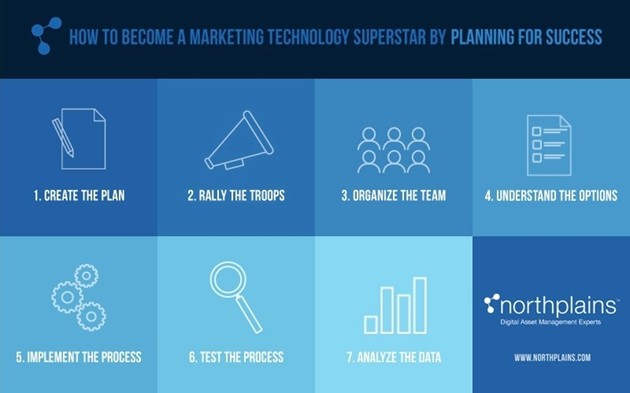Today's successful marketer must stay current on trends, organize digital assets, monitor online conversations, measure ROI, and much more. A well-stocked marketing toolkit is necessary to handle those tasks. And as revenue marketing and content marketing continue to converge, having the right tools and the right people in place is vital.
Keeping up with new technologies and evolving best-practices can be overwhelming; however, to excel, you must drop the fear and tap into those power tools. Here are few to consider:
- Marketing automation allows companies to track prospects through the funnel and tie actions to revenue.
- Social listening helps communications teams monitor their social presence and industry trends online.
- Digital asset management (DAM) software helps marketers better track, manage, and make use of their digital assets.
First, though, be clear about what marketing challenges your organization is facing; only then should you begin to identify and review various technologies.
When you're ready to begin, consider these seven steps for ensuring a smooth marketing technology adoption process:
- Create the plan.
- Rally the troops.
- Organize the team.
- Understand the options.
- Implement the processes.
- Test the processes.
- Analyze the data.
1. Create the plan
Make sure you have clearly identified the problem you're looking to solve and you understand the technology's benefit to your business before you move forward. Ask yourself what you and your team need to accomplish. Where are the gaps in your processes and your reporting? Does your lack of social listening leave you vulnerable? Is there a gap between marketing and sales?
If you look to implement a new process or technology and you can't articulate how it will move the business forward, you'll get shut down fast.
Your plan should also address both the financial and the bandwidth impact of the new technology on the company. Be able to articulate the cost and benefit along with how an increase or decrease in a person's time will affect the business. If the technology will free someone up to take on more projects, clearly articulate how the additional time will be spent. If the new technology requires additional budget, make sure you can demonstrate how you will track and report on the ROI to the business.
If you're lucky enough to be implementing a new marketing technology that will free up budget, be thoughtful about where the additional funds should be spent.
2. Rally the troops
Now that you have your plan in place, identify who the executives or stakeholders are from around the company from whom you will need buy-in. You should present the idea to more than one person to ensure alignment within teams and to reach an agreement on budget allocation.
Think ahead about what the objections will be from your stakeholders, and be prepared with thoughtful answers. Come prepared with successful implementation examples from similar companies and with analyst recommendations or statistics.
Remember in this stage to ask for people's input, listen to it, and make sure they feel heard. People rarely will buy into a new software or process if they feel it's being forced on them. Share your learnings and present your plan, but make sure to leave time for questions and suggestions and consider the perspectives and feedback from everyone on the team.
3. Organize the team
Once you've gotten clearance to implement a new marketing technology, the next step is to identify the team of people who will be directly affected and to organize them around the goals of the new technology. Hopefully you've already been in touch with many of them in the beginning stages, but you'll still want to have a kickoff meeting.






